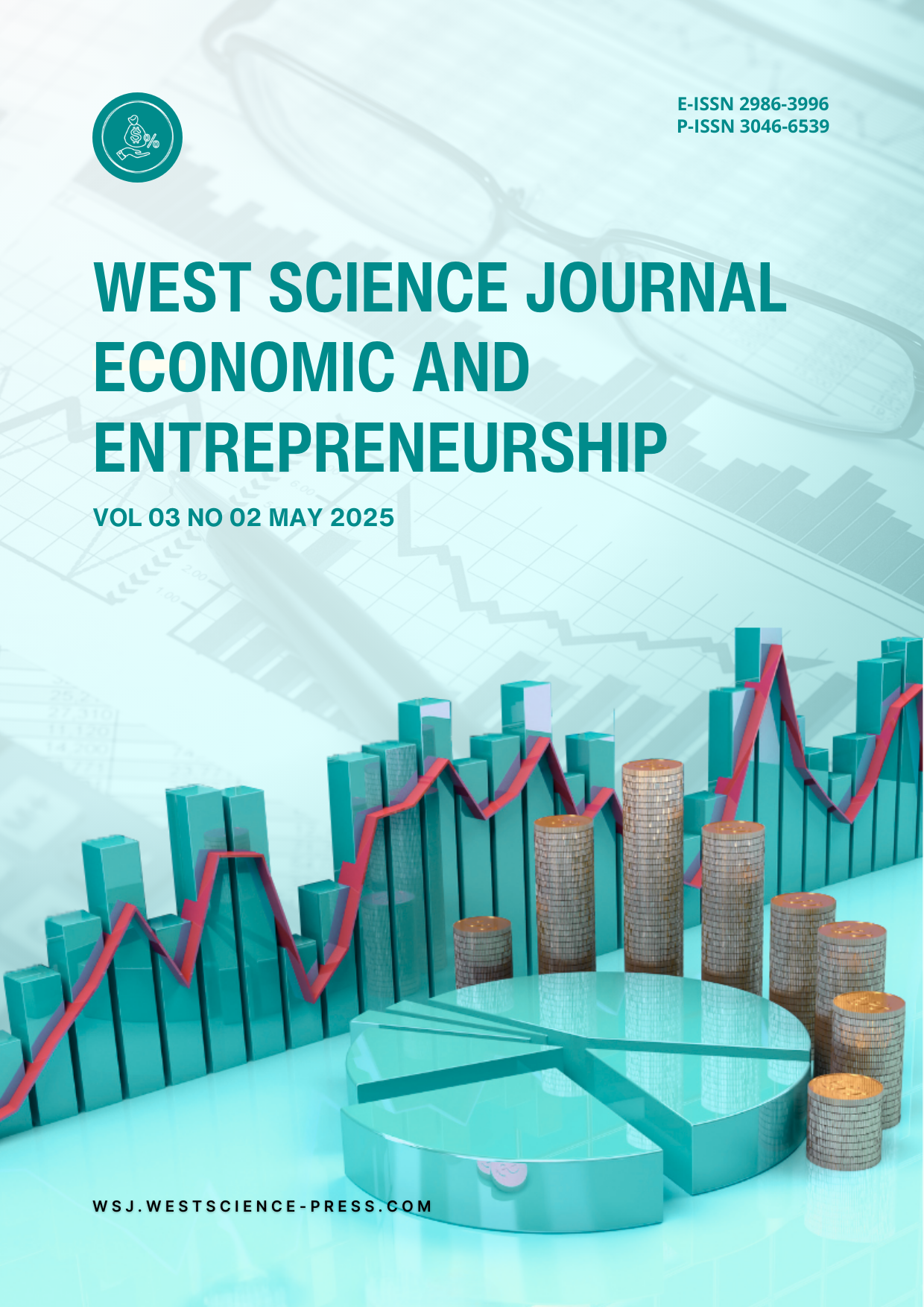Integration of Machine Learning in Financial Planning of Young Entrepreneurs in the Era of Digital Economy
DOI:
https://doi.org/10.58812/wsjee.v3i02.1893Keywords:
Machine Learning, Financial Planning, Young Entrepreneurs, Digital Economy, IndonesiaAbstract
The integration of machine learning (ML) in financial planning offers transformative potential for young entrepreneurs navigating the dynamic digital economy in Indonesia. This study employs a qualitative approach, analyzing data from interviews with five informants, including entrepreneurs, financial advisors, and technology experts, to explore the benefits, challenges, and contextual factors influencing ML adoption. The findings highlight that ML enhances decision-making, improves efficiency, and provides personalized recommendations for financial planning. However, challenges such as limited technical expertise, high costs, cultural resistance, and the digital divide hinder widespread adoption. The study concludes that a multi-stakeholder approach involving government support, education, and infrastructure development is essential to bridge gaps and enable young entrepreneurs to leverage ML effectively. These insights contribute to understanding the interplay between technology and entrepreneurship, offering actionable recommendations for policymakers and practitioners.
References
[1] N. Lachlan and O. Smith, “Determining factors for startup success in indonesia: Perspective of young entrepreneurs,” Startupreneur Bus. Digit. (SABDA Journal), vol. 3, no. 2, pp. 115–122, 2024.
[2] F. A. Faj’ri, M. A. Sahban, H. Saragih, and P. J. C. Kojongian, “Digital economy and business transformation in Indonesia: An exploration of opportunities and challenges,” Nomico J., vol. 1, no. 6, pp. 108–117, 2024.
[3] I. H. Z. D. Irwan, Lanskap Hutan Kota Berbasis Kearifan Lokal. Bumi Aksara, 2021.
[4] Loso Judijanto, Irsal Fauzi, Eliagus Telaumbanua, Syamsulbahri, and Arteurt Yoseph Merung, “Analisis Pengaruh Budaya Organisasi, Kepemimpinan Inovatif, dan Teknologi Digital terhadap Keberhasilan Bisnis Industri Startup di Indonesia,” J. Ekon. dan Kewirausahaan West Sci., vol. 2, no. 1, pp. 24–34, 2024.
[5] D. Biswas, “Financial modeling with machine learning,” Available SSRN 3915224, 2021.
[6] V. Sharma, B. Sah, N. Sahni, and R. Palaniappan, “Predictive Analytics in Finance: Leveraging AI and Machine Learning for Market Forecasting,” in Utilizing AI and Machine Learning in Financial Analysis, IGI Global Scientific Publishing, 2025, pp. 579–596.
[7] S. Biru, “Transforming Investment Banking Middle Office: A Framework for Advanced Security and Data Management,” Int. J. Sci. Res. Comput. Sci. Eng. Inf. Technol., vol. 11, no. 1, pp. 608–616, 2025.
[8] M. Zhao, “Revolutionizing Finance: The Comprehensive Impact and Application of Machine Learning,” Adv. Econ. Manag. Polit. Sci., vol. 112, pp. 192–198, 2024.
[9] O. Oliinyk, O. Dolynska, O. Polova, O. Shykina, and O. Sliusarchuk, “Modern, Innovative Approaches to Managing the Quality and Competitiveness of Hospitality and Tourism Businesses,” Econ. Aff. (New Delhi). 2024. Vol. 69. P. 169-177. DOI 10.46852/0424-2513.1. 2024.19, 2024.
[10] Y. Sonjaya, “Exploring the Evolution of Budgeting Practices from Traditional to Technology,” Adv. Manag. Financ. Report., vol. 2, no. 1, pp. 36–45, 2024.
[11] D. B. Audretsch, M. Belitski, N. Rejeb, and R. Caiazza, Developments in Entrepreneurial Finance and Technology. Edward Elgar Publishing, 2022.
[12] M. E. Kitces, “The future of financial planning in the digital age,” in CFA Institute Conference Proceedings Quarterly, 2016, pp. 17–22.
[13] K. B. TÜRK, M. F. BARAN, Z. ASLAM, and S. SEYDOŞOĞLU, “PROCEEDINGS BOOK,” 2021.
[14] K. Mathieson, E. Peacock, and W. W. Chin, “Extending the technology acceptance model: the influence of perceived user resources,” ACM SIGMIS Database DATABASE Adv. Inf. Syst., vol. 32, no. 3, pp. 86–112, 2001.
[15] L. Wu and M.-L. Chiu, “Organizational applications of IT innovation and firm’s competitive performance: A resource-based view and the innovation diffusion approach,” J. Eng. Technol. Manag., vol. 35, pp. 25–44, 2015.
[16] H. Kim, “Machine Learning Applications in Finance Research,” Fintech with Artif. Intell. Big Data, Blockchain, pp. 205–220, 2021.
[17] H. Gao et al., “Machine learning in business and finance: a literature review and research opportunities,” Financ. Innov., vol. 10, no. 1, p. 86, 2024.
[18] S. Mndebele, “The Issues, Challenges and Impacts of Implementing Machine Learning in the Financial Services Sector: An Outcome of a Systematic Literature Review”.
[19] T. Hargyatni, K. D. Purnama, and G. Aninditiyah, “Impact Analysis of Artificial Intelligence Utilization in Enhancing Business Decision-Making in the Financial Sector,” J. Manag. Informatics, vol. 3, no. 2, pp. 282–296, 2024.
Downloads
Published
Issue
Section
License
Copyright (c) 2025 Loso Judijanto, Farid Wahyudi, Meiske Wenno, Hasmia Melati Arifin

This work is licensed under a Creative Commons Attribution-ShareAlike 4.0 International License.
























 Instagram
Instagram 